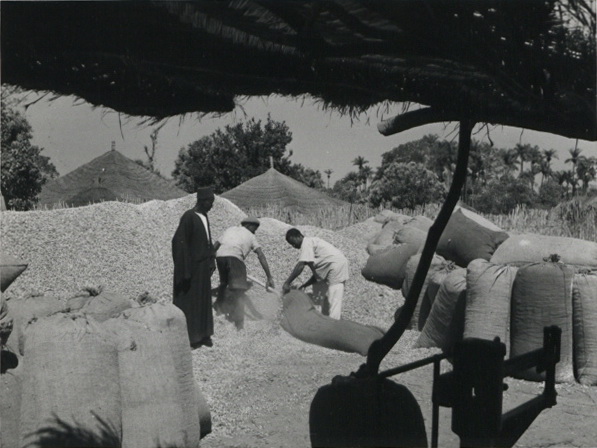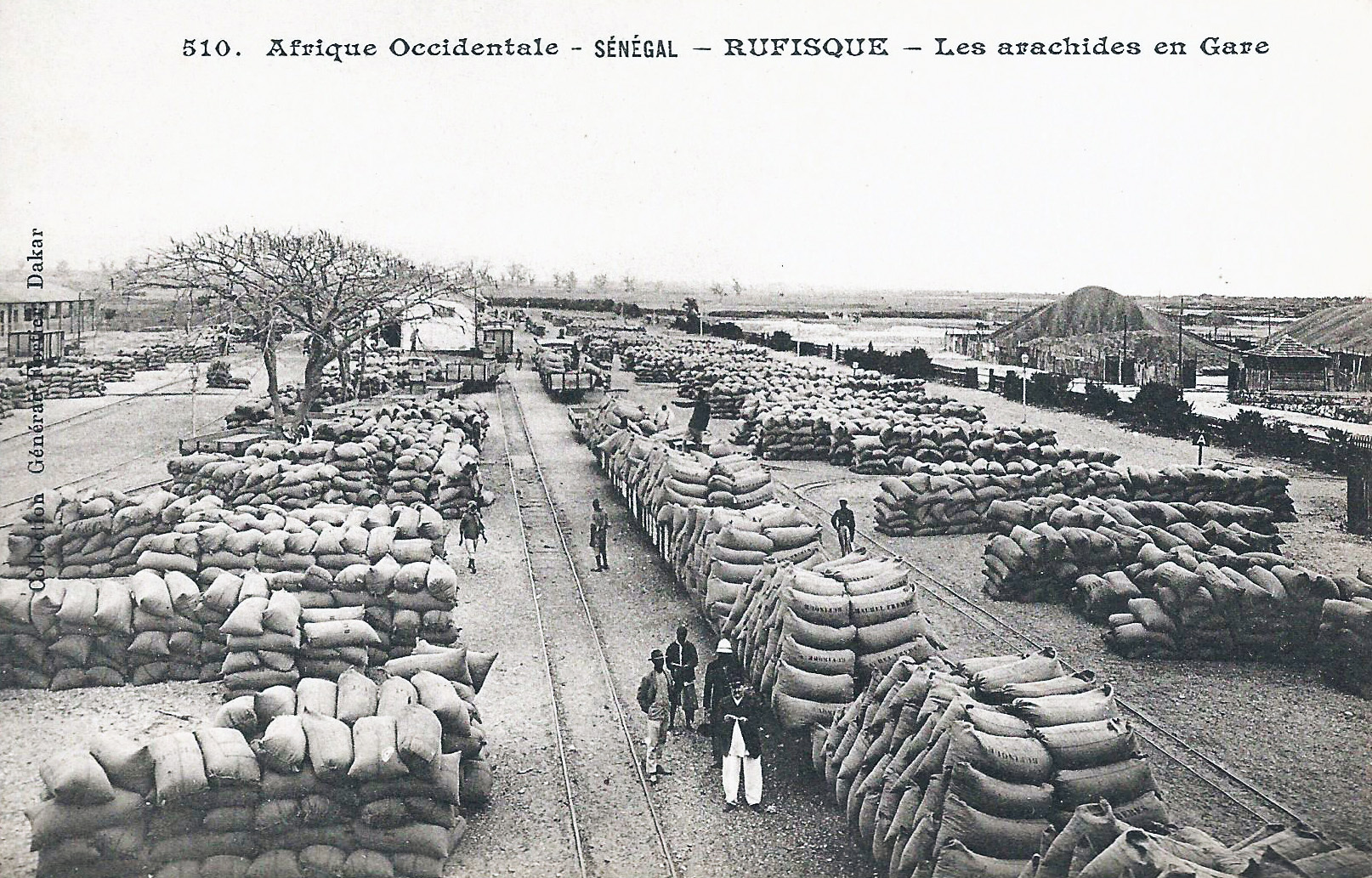Seasonal Farming
During the colonial period and after, Fulbe and others crossed borders annually to work on peanut farms. Colonial economies relied substantially on exports, and in West Africa, much of that took the form of peanut production. Peanut production became commercialized in the 1830s along the Gambia River, before reaching Senegal and then-Portuguese Guinea in the 1840s. During the early twentieth century, this production pushed further inland, and by the mid-twentieth century peanut production came to dominate colonial agricultural production in southern Senegambia. Most of this overseas consumption revolved around using peanuts to produce peanut-based soaps and oils, which could, among its many other uses, be used for cooking and to produce candles.
However, in many areas the number of able-bodied farmers was insufficient to produce peanuts in large quantities for export. As a result, migrants from elsewhere in the broader region would migrate to central Senegal and Gambia to work on others’ land. Seasonal farmers came from Guinea-Bissau, and Mali (then-French Sudan) into Gambia and the peanut basin of central Senegal (to the north of Gambia). These farmers would be hosted by families, who fed them and housed them in exchange for their labor and a certain percentage of what they produced. Depending on the arrangement, seasonal peanut farmers worked between two and four days a week for their hosts, and the rest of the time for themselves.
Many Fulbe and others saw seasonal farming as a way to make hard cash and buy goods not available at home, then return to their communities in a much stronger economic position than before. These movements were particularly intense out of Mali in the early twentieth century, before shifting in the 1940s toward Guinea and Guinea-Bissau. The harsh burdens of colonial taxation meant people needed to have money to pay the colonial government, and so seasonal farming created opportunities to make money without having to sell animals, their own personal food crops, or whatever else they needed. In Senegal, these farmers were known as navétanes, from the Wolof nawet (rainy season). In Gambia, they were referred to as “strange farmers,” in a reference to the foreign origin that made them “strangers” in the country.
These migrations were particularly prominent among young men, who saw opportunities to break free from their parents and ordinary village life, and travel to see other regions or colonies. Many used their income to collect money to build their own homes, pay bride-prices, buy bicycles, or purchase clothing or fabric for their growing families. Seasonal farming was not easy. It was a challenge to find a host. If you someone agreed to take you in as their “strange farmer,” they would feed you and house you, but otherwise you would need to beg for your food, and sleep outside on the ground.
Seasonal farming caused challenges in both sending and receiving communities. For most of the year, women took over in many families as temporary heads of household as their husbands headed elsewhere. In addition to their normal responsibilities, they became increasingly responsible for agricultural production for the entire family, which they had previously shared with men. In receiving communities, women took over the responsibilities of cooking, cleaning, and washing clothes for seasonal farmers, gathering whatever leaves they could find to make sauce for meals. Most would return home at the end of the farming season, but some would stay, marry local women, and establish roots.
Some of these farmers would return year after year, at times continuing these patterns for over a decade. In rural parts of Guinea-Bissau and Guinea, where it was difficult to profit economically, the migration of young men to Senegal and Gambia came to be seen as a rite of passage. Seasonal work is still quite common throughout Senegambia, although without the large numbers of seasonal migrants seen during most of the twentieth century.
When conducting research in Guinea-Bissau in 2017, I noticed a reversal of historical patterns: young men from Senegal were heading south to Guinea-Bissau to take part in seasonal cashew harvesting. Cashews, a lucrative crop that today makes up a substantial portion of Guinea-Bissau’s exports, has attracted migrants much in the way peanuts did roughly a century ago.

